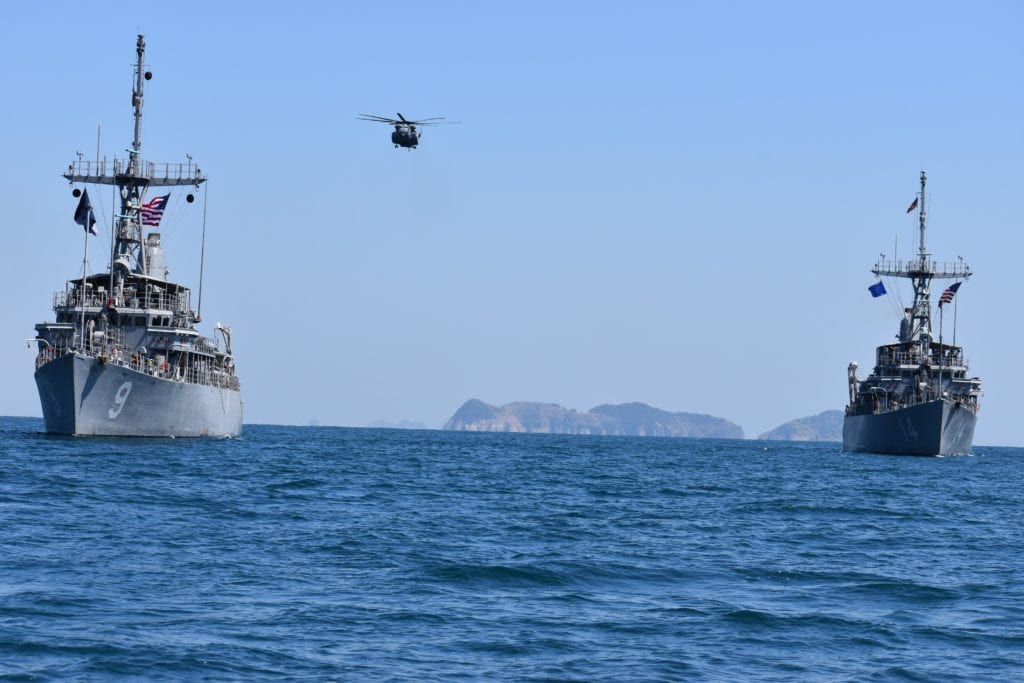
ARLINGTON, Va. — The Navy official in charge of mine warfare development said strides are needed to decrease the search and neutralization time of mine counter-measures operations.
“We need to get faster; we need to speed the timeline up,” said Capt. Robert Baughman, director, Mine Warfare Division at the Naval Surface and Mine Warfighting Development Command in San Diego, speaking at a Feb. 2 webinar of the National Defense Industrial Association’s Expeditionary Warfare Conference. “Improving the detect-to-engage timeline is vital as we shift from a ship in a minefield to off-board and autonomous systems.”
For single-pass detect-to engage, with “on-board processing and high-end autonomous target recognition, we can neutralize the mine immediately,” Baughman said. “Machine learning is improving this capability, but we need systems to either pass contacts during the mission cycle, or immediately upon recovery in the interim, telling what it assesses to be a mine.
“In the meantime, industry can help us with in-stride data transfer, transmitting high-quality data beyond line of sight that will help us get data back to the ship to start the post-mission analysis, and not wait till the end of a 20-hour mission, which then requires 20 hours of post-mission analysis on the back side,” he said.
The captain also said, “capabilities need to be smaller, more expeditionary, and more reliable. Unmanned systems need to be highly modular, built with open architecture in mind, with hi-rez sensors, and to be networked systems of systems. Sailors must be able to fix them on the ship and easily modify them for specific missions. We can’t rely on a team of contractors or Ph.D.’s to effect repairs or change out sensors in the field.”
Being acoustically quiet and having a low signature overall are important, Baughman said.
Single-use minesweepers are not affordable at this point, he said. “All future systems and enabling technologies should have this as a consideration in their design and development.
“Communications and navigation systems must be resilient and also be able to operate in denied environments for sustained periods of time,” he said. “Having a clandestine capability can help with this, especially when we talk about mining technology. If they’re networked, we can control them better, turning them on or off as required to avoid detection at a time of our choosing.
“For all of these systems, power and portability are extremely important,” the captain said. “We need systems with long duration that can conduct surveys and persistent station keeping for whatever we tack UUVs to do. We need to be platform agnostic.
“We are a more expeditionary, off-board, distributive force than we were even five years ago, and regularly integrate with our coalition partners,” Baughman said. “So, being able to rapidly and seamlessly share info and make timely decisions as necessary though our tactical decision support aids, up and down the decision process. File size, classification, bandwidth and latency constraints can’t hinder our ability to share data across the force. Data management is becoming more and more of an issue.”
- SECNAV Advocates Increased Legal Immigration to Increase Shipbuilder Workforce - April 23, 2024
- Insitu Going Strong at 30, Focusing on Maritime Operations - April 8, 2024
- Navy Awards Boeing Additional Funds for MQ-25 Drones for Testing - April 3, 2024






